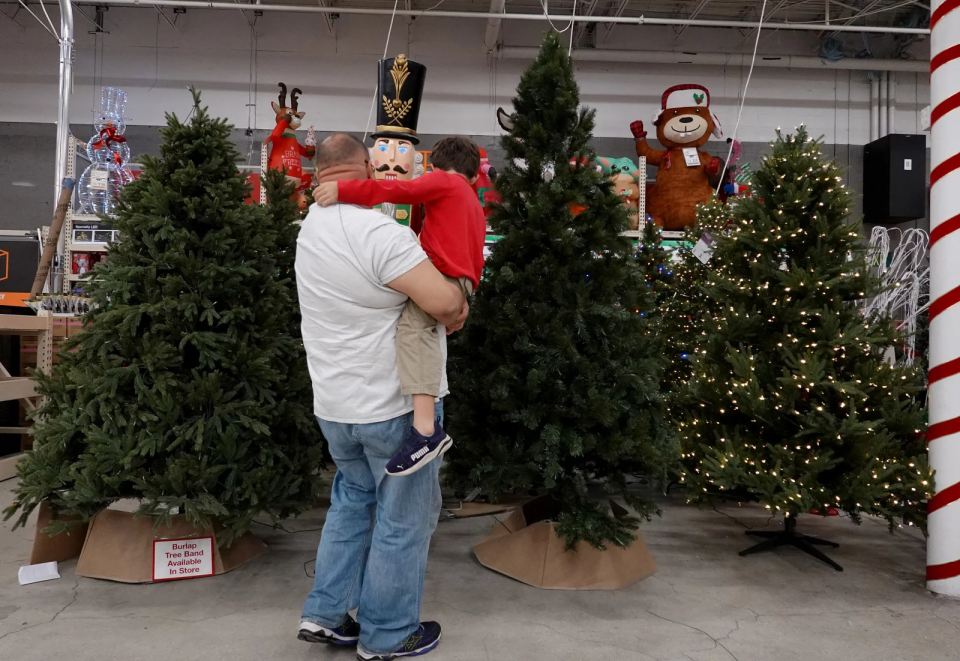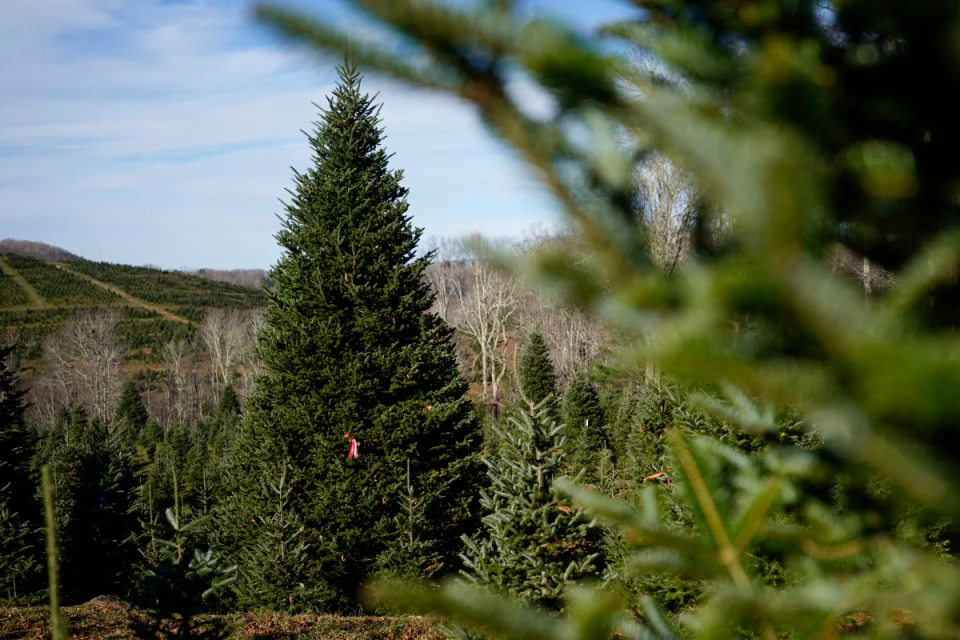Truth matters. Community matters. Your support makes both possible. LAist is one of the few places where news remains independent and free from political and corporate influence. Stand up for truth and for LAist. Make your year-end tax-deductible gift now.
O Christmas tree, O Christmas tree, which is more sustainable: real or plasticky?

It's time to discuss one of the perennial debates of the holiday season: Which are more eco-friendly, real trees or their fake counterparts?
If you ask Tim O'Connor, executive director of the National Christmas Tree Association, the answer is obvious.
"I think it's just a no-brainer that real Christmas trees are far superior for the environment," he said. "Let's just start with a product of nature versus a product that's made from oil."
Of course, O'Connor's organization represents Christmas tree farmers. Here's what studies and environmentalists say.
The studies
The most recent U.S. analysis of the issue is from 2018, when a life cycle assessment — measuring the environmental impact of real and fake trees over the course of production to disposal — was published. (It's worth noting that the study was done by a consulting firm contracted by the American Christmas Tree Association, which represents the artificial-tree industry.)
The analysis took into account things like the netting around real Christmas trees and the water used to keep them alive in homes, versus the plastic packaging tape used on fake-tree boxes and transportation from manufacturers in China.
It concluded that artificial trees have a more favorable effect on the environment if reused for at least five years.
It's worth noting, though, that with all these variables, the study says that transportation accounts for around 15% of total global warming potential for artificial Christmas trees and 10% to 12% for real ones. So if that tree farm or big-box store is a long drive away, it can really sway things.
"Neither a farm-grown tree or a faux tree has a superlarge environmental impact compared to some daily activities like commuting a long way in a gas-powered car," said Mac Harman, the CEO of Balsam Hill, which makes high-end fake trees and offers an eco-friendly line of trees made from recycled plastics and plant-based plastic. "One long commute could be about the impact of having a Christmas tree for a year."
Environmentalists, meanwhile, suggest studies shouldn't be the only evidence consumers take into account.
"Studies can really vary on anything depending on who's funding the study, what parameters they're looking at, which elements are the most important, or are they just looking at carbon impacts? Are they looking at other resource impacts? Are they considering extraction? Are they considering disposal?" said Darby Hoover of the Natural Resources Defense Council.

An environmentalist's take
Several environmental groups have waded into the debate, and for many of them, real trees are the winner.
"For me, it's not just carbon," said Hoover. "One of the things about the artificial trees is that they're made of plastic almost entirely. And the by-far-most-common polymer used to make artificial trees is PVC, polyvinyl chloride, which is a particularly toxic form of plastic that's toxic in production, use and disposal."
It's worth noting the endgame for both options: If real trees end up in a landfill and don't break down, they're still storing all the carbon they absorbed in life. And if they're mulched, they're being reused for greener purposes. Most artificial trees aren't recyclable.
"If [people] want to do what's better for the environment, if they want to support a family farmer, if they want to have the kind of Christmas experience for their family that is authentic, that includes something from nature rather than something from plastic, it's a pretty simple decision to have a real Christmas tree," O'Connor of the real-Christmas-tree association said.
How to be tree-mendously green for Christmas
Want to take it a step further? Let's go back to the tree's roots — as in letting the tree keep its actual roots.

"I think the best option is using a plant that's already in your life or that you want to purchase and have stay in your life," said Hoover. "So rather than buying a plant that's going to be cut down, why not repurpose a tree that's already on your property or a really fancy potted plant that's already in your home?"
And if your wilted snake plant isn't Christmassy enough for you, there's another option. There are companies that allow you to rent a live Christmas tree that returns to the nursery when the holidays are over.
And if you already have a fake tree, keep using it. Harman of Balsam Hill says he knows people who still have trees from his company's early days nearly two decades ago.
"It doesn't make business any easier for us selling more trees when they last so long, but it's certainly good for the environment," he said.







